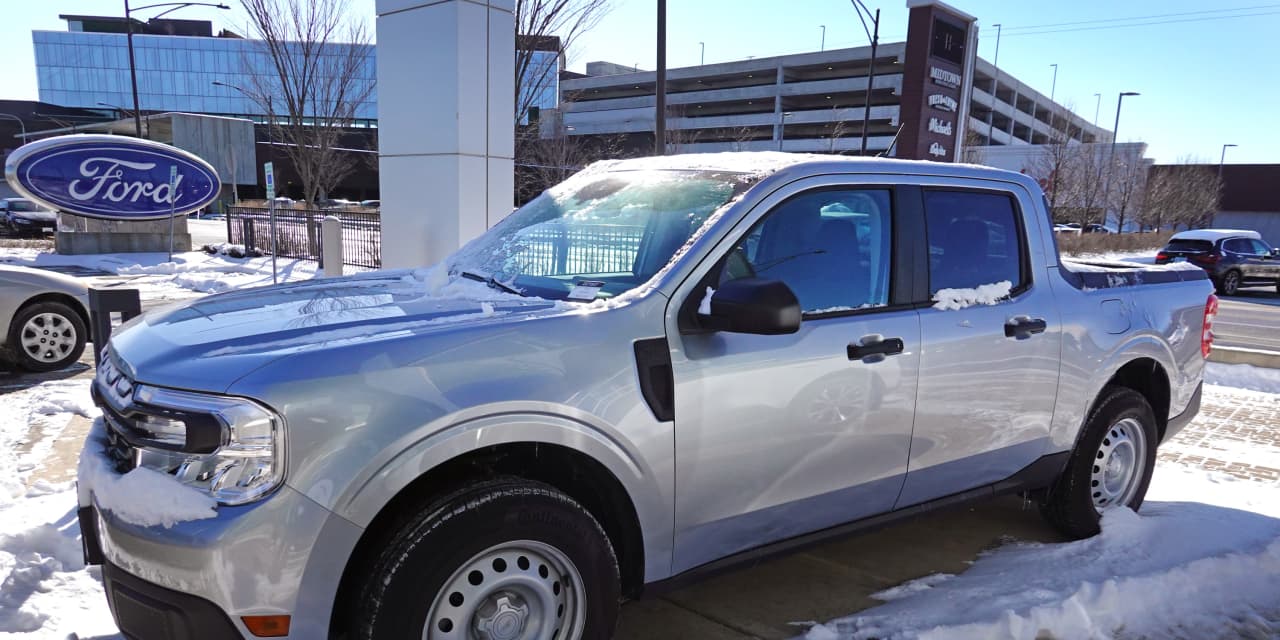While the United Auto Workers’ 2023 labor negotiations were solely with the Detroit-Three auto makers, the talks’ impact is evident across the entire U.S. auto industry.
News from car companies beyond those three—
Ford Motor
(ticker: F),
General Motors
(GM), and
Stellantis
(STLA)—illustrates just how big the domino effect is.
In the latest example, The Wall Street Journal reported Wednesday that many of
Toyota
‘s U.S.-based hourly employees got a 9% raise, effective Jan. 1, citing a company spokesman. Toyota declined to comment in response to a Barron’s request Wednesday.
The Toyota news comes in the wake of Ford, GM, and Stellantis’s tentative agreements with the UAW, which will likely end the strike that began on Sept. 15. The agreements include wage increases of about 25% over the life of the contract for each auto maker over the life of the contract which runs through April 2028 plus some inflation protection. The immediate pay bump upon ratification is 11%.
Raises at Toyota, however, aren’t surprising. UAW President Shawn Fain has promised to try to organize nonunion auto makers in the coming years. That is mainly foreign auto makers that have operating plants in the U.S., such as Toyota.
Wages at Toyota would have to rise close to UAW levels simply to keep the union at bay. Lifting wages to just below UAW levels also gives Toyota a small competitive advantage over the Detroit-Three, which can amount to a couple hundred dollars per car. Of course, who wins and loses in the car business is about much more than solely labor costs.
The UAW didn’t respond to a request for comment.
Ford estimated on its earnings conference call this past week that the agreed-upon labor cost increases would translate into car price increases of a few hundred dollars. That works out to less than 2% of current average sticker prices.
Car pricing is about more than just labor costs though, as well. Just look at what’s going on with the Ford Maverick pickup truck.
The strike affected Ford’s Michigan Assembly Plant, which produces Maverick trucks. That has reduced the supply—which always leads to higher prices. The disruption comes amid steadily strong demand for the model—at one point in early 2022, Ford had to stop taking 2023 Maverick orders because it was already struggling to fill order backlogs. All of these factors are showing up on the Maverick price tag. Barron’s found a handful of instances of dealer websites that listed 2023 Mavericks over the MSRP, short for manufacturers’ suggested retail price.
Sometimes dealers have no choice—for instance, if they have to pay above MSRP at vehicle auctions to fill customer orders. Still, no one likes to pay over sticker price. Ford didn’t immediately respond to a request for comment.
Eventually, things will normalize and prices will return to normal. The same thing happened during the Covid-19 pandemic, when low or no auto production led to low dealer inventories.
Overall, the average transaction price for a new car in the U.S. is about $48,000, about $10,000 higher than it was prepandemic. Prices might come down a little, but they won’t be headed back to under $40,000. That isn’t due to price gouging or labor but a combination of many factors across the supply chain and in the broader economy.
Ford stock was up 1.1% in midday trading Thursday while the
S&P 500
and
Dow Jones Industrial Average
were up 1.5% and 1.2%, respectively. Toyota stock is down 0.7%.
Through midday trading Thursday however, Toyota shares were up about 13% over the past three months—the period during which the labor talks proceeded at Ford, GM, and Stellantis. Ford stock fell about 33% over the same span.
Write to Al Root at allen.root@dowjones.com
Read the full article here













Leave a Reply